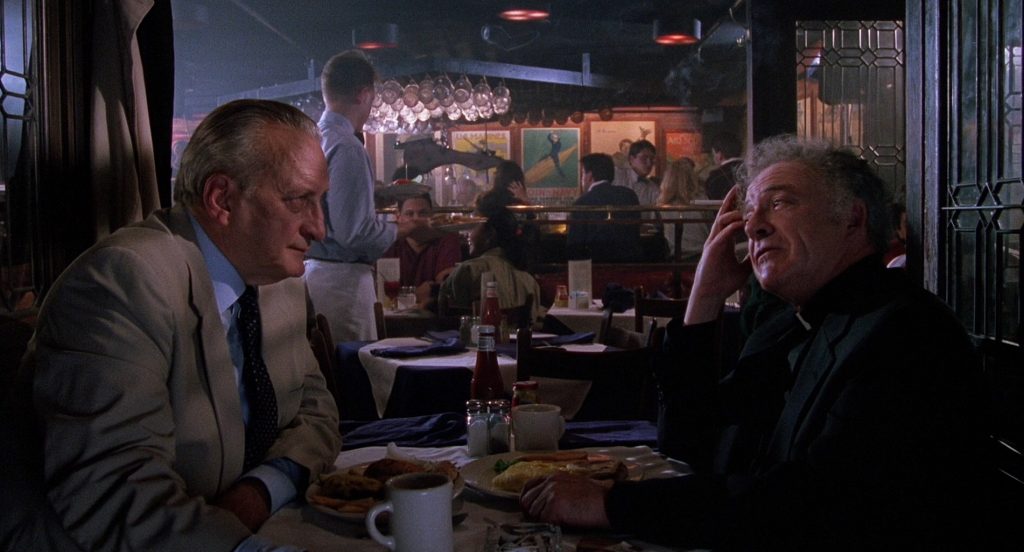The Madness of Belief, by Reed Lackey
22 Feb
William Peter Blatty, the legendary author of The Exorcist, directed exactly two films. The most popular of those is The Exorcist III, but before that, he helmed the bizarre, reflective, often hysterical and often alarming oddity called “The Ninth Configuration”. Starring Stacy Keach and Scott Wilson, the story tells of an insane asylum which has just received a new director named Kane. What begins as an apparent adjustment period as director and patients get to know one another eventually shifts into unusually heavy and thought-provoking territory.
This is a demanding film. It asks a lot of its audience, not only in attention but also in flexibility. The first half largely resembles a screwball comedy. The bizarre cast of characters delivers genuinely hysterical dialogue as they jaunt about with frenetic energy as Colonel Kane strives to maintain a sense of stability and professional courtesy. There are even performances from Jason Miller (famous for his role as Damian Karras in the original Exorcist) as a man trying to stage an entire theater production of Shakespeare acted out by dogs and Blatty himself as a doctor who simply cannot accept that he’s actually a mental patient. As the characters make wild remarks about the state of humanity and struggle to define the human condition in their own absurd way, Stacy Keach as Kane remains steady as an anchor, delivering barely a hint of any expression beyond stoic.
But something isn’t quite right about Kane, and about two-thirds of the way through, we find out precisely what the problem is that’s been scratching at our senses all the while. It is then that the film shifts in both tone and focus away from the comically bizarre to the dramatic, the theological, and – for a few moments – the horrific. There are compelling visual and verbal metaphors throughout and the Blatty appears to be inviting viewers to pause every few minutes to reflect and think about what a character has seen or said. One particularly compelling visual image is of a spaceman landing on the moon, claiming it with his country’s flag, only to turn and see a larger-than-life crucifix planted firmly in the ground behind him, as if to say that no matter how early we think we’ve arrived, something higher and greater had been there for ages already.
Not every beat lands well, particularly in the climax of the film, which left me feeling more a sense of futility than of the noble sacrifice it seems to be intending. But what you’ve seen is hard to shake off. It may not all make sense. It might all even seem like something fairly akin to insanity. But the thread of what Blatty is exploring is deeply compelling. By examining matters of belief and life through the lens of madness and absurdity, he has managed to make quite a few provocative observations which, while they may not resonate with every viewer, are undeniably worthy of consideration.




No comments yet